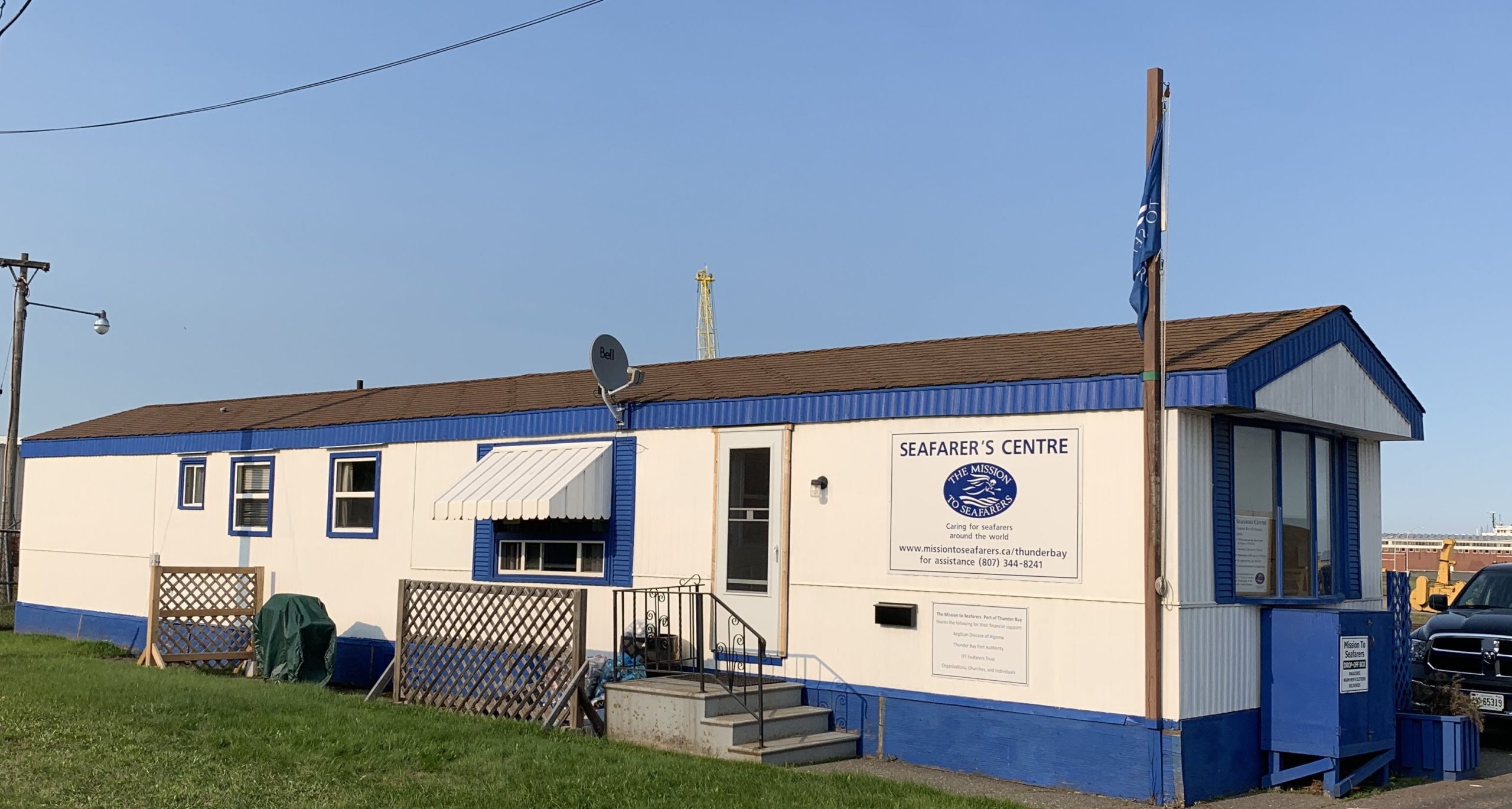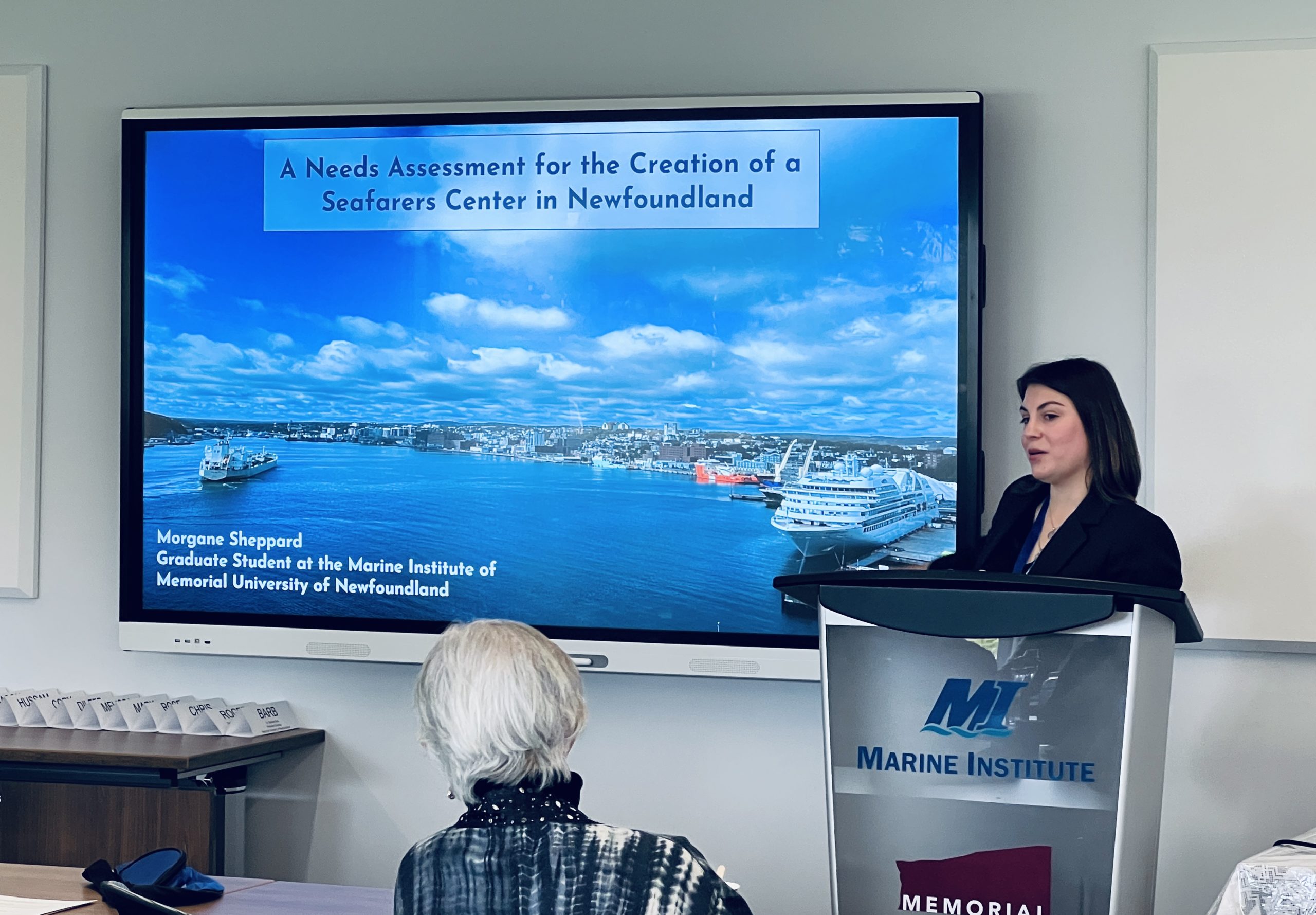By Susan Huppert, NAMMA
Between the grain fields of western Canada and continents across the Atlantic rests a small port where industry experts balance grain supplies and global demands. As of June 30, the Thunder Bay Port Authority reports exports are up seven percent over last year. Thunder Bay boasts the fastest ship turnaround time of all western Canadian grain ports.
The applauded increase in shipping represents far more than an economic upturn. To seafarer centers and those who support them, it signals a more complex challenge of caring for those who man the ships. As grain cascades into the deep holds of oceangoing vessels, those in orange coveralls who live and work on those vessels and are essential to the delivery of such goods are seen by the mission-minded as more than cogs in an economic machine.
According to historic records, the first mission to seafarers in the Thunder Bay area was an ecumenical effort established in 1910 and operated by local churches. The mission was developed from concern for sailors. By 1912, a structure was operating as the Royal Sailors Institute. The mandate was to spread the Gospel. Aware that sailors lived onboard in cramped quarters, part of their response included overnight accommodations where workers would get off their ships to recreate and rest. At its height in the mid-1940s, 24,000 beds were occupied. Meals were served at no cost to many.
Shipping among the Great Lakes changed with the opening of the St. Lawrence Seaway in 1959. The waterway introduced ocean-going vessels with international crews to the Thunder Bay region, broadening the outreach and responsibilities.
In 1961, the Reverend Canon Stanley Smith visited the area explaining his work in the port of Vancouver, Canada. Some caught the vision and six months later, a decision was made to establish a station at the furthest inland port, expanding the mission to Thunder Bay. Local Anglican women groups provided care, companionship and comfort to seafarers through a building near the port.
“The seafarers need us,” said the current chaplain, The Rev’d Canon Ed Swayze.
Swayze was appointed as part-time chaplain in 1994 in conjunction with his service at St. Stephen the Martyr Anglican Church. With only 2.25 days per week designated for the mission, he recruited and trained volunteers. To manage consistency he developed a Watch Keepers and Drivers manual, equipping a rotation of workers in his absence.
After 24 years of service, Swayze keeps the original focus of the mission with seafarers at its core in Thunder Bay. This priority translates to a strong relationship between the mission station and its port authority. A small blue and white seafarers’ centre set up to welcome seafarers sits on port property rent free. Funding from businesses, churches and individuals keep the seafarers’ centre prepared to receive guests. A network of funding avenues normally raise awareness among the public including a day designated annually to “Bless the Fleet”, an annual fundraising dinner and meat auction. Due to the pandemic much of this was cancelled this year.
Technology remains the greatest change in how the mission serves seafarers. Previously, volunteers helped sailors who visited the small center dial international calls and make connections to families in distant lands. These personal interactions offered opportunities to care beyond just the dialing of phones.
“An Indian crew once commented with appreciation on the care offered by the volunteers and staff,” he said. “It is just what we do – like the church.”
Today, Wi-Fi access and SIM cards has streamlined these vital services and alleviating volunteers. The personal contact is missing. Electronic lifestyles are wrapped tightly around Wi-Fi and SIM cards. It is convenient, but humanly cold. Isolation also increases as world-wide response to the COVID-19 virus remains primary.
The social isolation we have all now experienced through COVID-19 lockdowns has always been part of the seafarer life, on board at sea far from home or other people. We need to actively reach out to other people to overcome our isolation. This means reaching out to seafarers, but also working together with other people.
The Thunder Bay Port Authority takes an active interest in the work of the seafarers’ mission. “We have a good relationship with them. We appreciate the work they do in the port. They seem to have a good grasp on their mandate,” said Port of Thunder Bay Communications and Research Coordinator, Chris Heikkinen. “We support them financially, they are our annual charitable donation.”
These partnerships allow the work of the Mission to continue.
Swayze explains the work as an ongoing evolution of service, particularly with the recent imposition of COVID restrictions and guidelines implemented through health organizations, governments and Transport Canada.
Providing direct care to the 1,000 seafarers seen annually during the open waters has clearly decreased. Much shorter times in port and most currently, the response to COVID-19 have nearly eliminated face-to-face contact.
“We are in a fluid situation,” he said.
Amid this climate, Swayze continues to offer hospitality and a safe environment to all when requested.
About one-third of his time designated specifically to direct contact with the seafarers pre-COVID, Swayze was often found transporting seafarers to shopping, medical visits or the centre for critical WI-FI access. Each interaction was an opportunity to extend Christ.
Then a global pandemic changed the mission and the lives of seafarers.
Those previously confined to their work environment by long days at sea anticipated arrival in ports as an opportunity to get off their vessel for rest, but more often to meet critical needs of sending money to families and managing other tasks which docking affords them.
Ministry has become an ongoing evolution of service particularly with the imposition of COVID-19 restrictions of multiple organizations and the implementations needed to comply.
Gatherings by chaplains with seafarers to introduce their services in mess rooms are not allowed. Mission workers cannot board ships. Swayze may pick up a shopping list from a ship, but the days of loading his Econoline van with crew happy to be on land are gone – at least for now.
Amid this climate, frustration can develop as Swayze seems a one-man-band in a comparably small port ministry. He is a trained spiritual caregiver in the role of an administrator with limited funding to change the dynamic.
“This (COVID adjustment) is common with a lot of Canadian stations,” he said. “We are all struggling.”
Access to the increasing number of seafarers has clearly decreased. Much shorter times in port have called for adjustments. COVID is complicated. The mission and its leadership remains engaged as a vital link between seafarers and those they need. Whether family, medical personnel or spiritual leaders, seafarers are still finding support at this dot on the map between Canada and the rest of the world.
Visit The Mission to Seafarers: Port of Thunder Bay website here.





